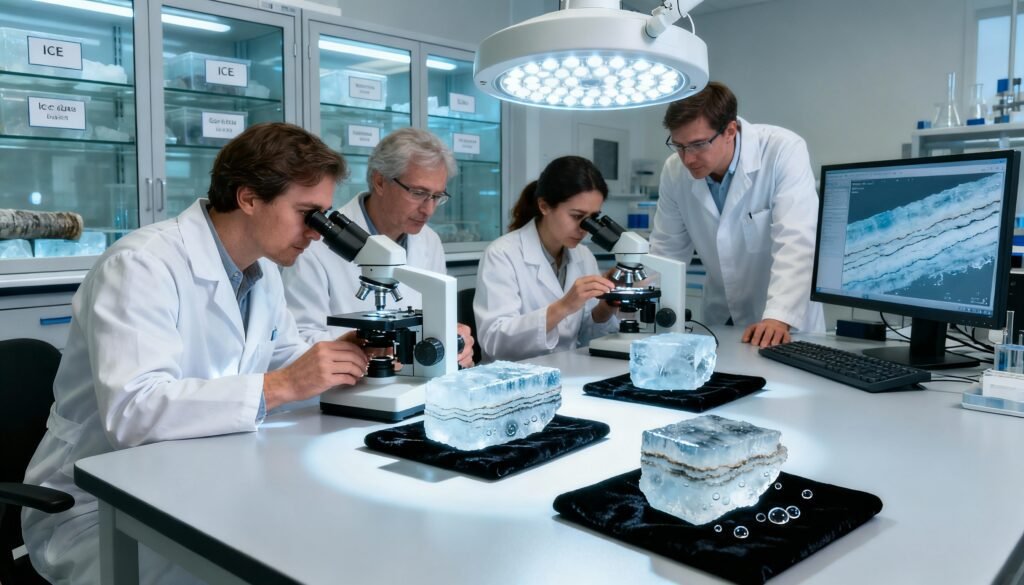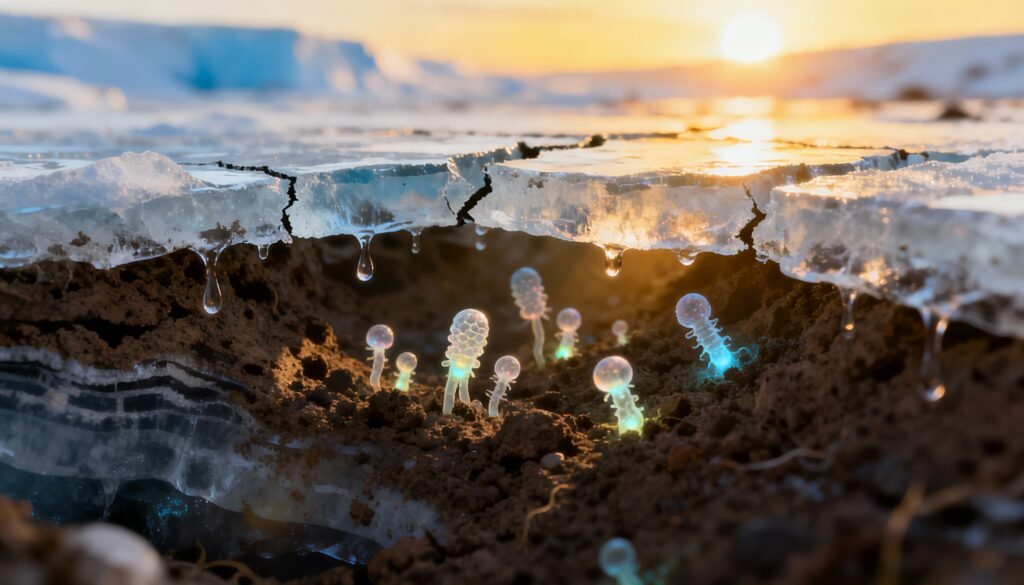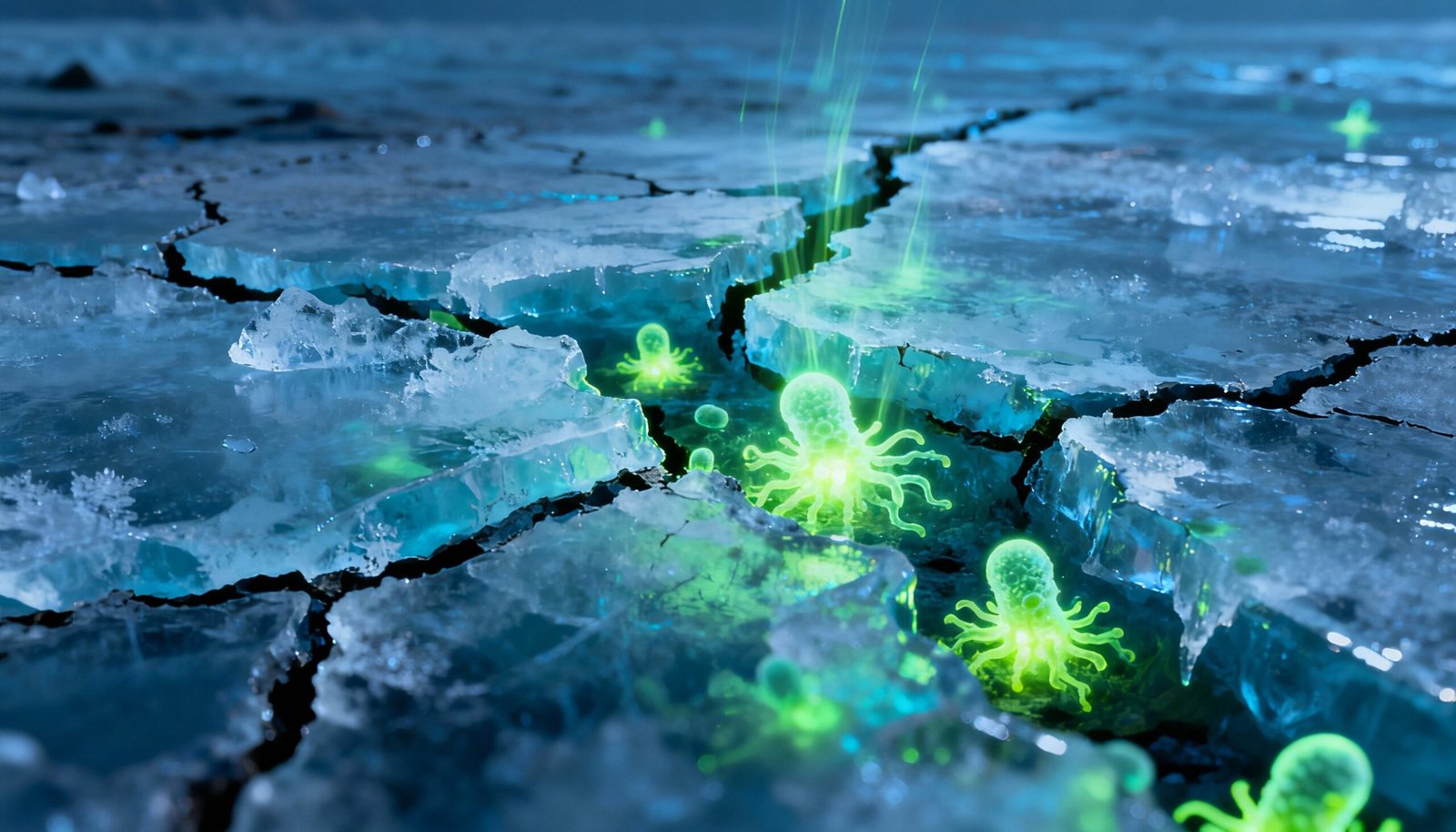As the Arctic permafrost melts under the pressure of rising global temperatures, something terrifying stirs beneath the ice — ancient microbes that have been frozen for tens of thousands of years. These “zombie microbes,” preserved since the Ice Age, are awakening for the first time in millennia — and scientists are racing to understand what their revival could mean for our planet.
What Is Permafrost?
Permafrost is permanently frozen ground found in the Arctic, Siberia, Alaska, and parts of Canada. It locks away ancient organic matter — including plants, animals, and microorganisms — in icy tombs that can date back over 40,000 years.
When this frozen layer thaws due to climate change, these long-dormant microbes can come back to life.

The Discovery: Life After 40,000 Years
Researchers in Siberia and the Arctic have successfully revived prehistoric viruses and bacteria from thawed permafrost.
One example is a 48,500-year-old virus, nicknamed Pandoravirus yedoma, revived from ice in Russia’s permafrost — and remarkably, it was still infectious (to amoebas, not humans).
This shows that life can survive unimaginable time spans — and that melting permafrost could unlock unknown biological risks.
The Hidden Threat
While these ancient microbes may not immediately threaten humans, their revival raises major concerns:
- Unknown Pathogens: Some could be ancient disease-causing viruses humans have never encountered.
- Ecosystem Disruption: Revived microbes could alter soil chemistry and carbon release patterns.
- Carbon & Methane Release: As microbes decompose organic matter, they emit greenhouse gases — accelerating global warming further.
It’s a dangerous feedback loop — warming releases microbes, microbes fuel more warming.

Climate Change’s Chain Reaction
- Rising temperatures → Permafrost melts
- Permafrost melts → Ancient microbes awaken
- Microbes decompose matter → Methane and CO₂ released
- Greenhouse gases → More warming
This vicious cycle shows how deeply climate change and microbiology are intertwined — and why scientists call the Arctic a ticking biological time bomb.
What Scientists Are Doing
Teams from France, Russia, and the U.S. are studying revived microbes in high-containment labs. Their goal: identify genetic risks, develop response plans, and model how permafrost thaw could release biological agents or greenhouse gases in the coming decades.
Fascinating Facts
- Some revived microbes date back over 40,000 years.
- Thawing permafrost releases nearly 300 million tons of carbon annually.
- The Arctic is warming four times faster than the global average.
- “Zombie viruses” can remain infectious even after tens of millennia.
Conclusion
The awakening of ancient microbes is more than a scientific curiosity — it’s a warning. Climate change isn’t just reshaping weather patterns; it’s unsealing the biological past. As permafrost melts, we may find that the greatest danger lies not in the future — but in what’s been frozen for 40,000 years.











